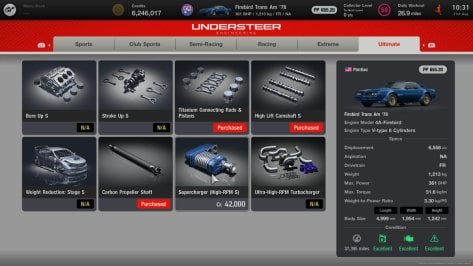I agree about the Honda. Disagree about the Windsor. The custom engine builders know their craft.
I've seen 4 Piston Racing engines have low compression out of the box, and they build race engines by the dozen. Custom builders hardly do any engine testing compared to OEMs. It's a lot of this worked before, so we'll use it again. It's not the billions of dollars OEMs spend. They don't have the money for it, the machinery, or the staff. The benefits are that they don't have to meet emissions, longevity tests, but don't mistake that for raceability. Most will fail if driven in race conditions really quickly if not in the first minutes, certainly within a few race hours. The only parties that beat OEMs in terms of engineering might, are either suppliers to OEMs, their racing arms, or specialty shops that build for their racing arms like Cosworth or Ilmor.
Neither am I, neither of those engines I mentioned are stock. The GAC Maverick engine is a highly modified 351W, definitely not anywhere close to stock. The Mansory Veyron also got some customization and tuning done to it. The Veyron comes from the factory with 1,001 horsepower, Mansory got it up to 1,111. No idea what the actual full potential of the W16 is, but also not sure what the full potential of the 351W is either. The full potential really all depends on the quality of the parts used and how well everything is machined and balanced etc. You can have a 500hp V6 easily outlast a 500hp V8. Size or number of cylinders doesn’t always mean more power or better capable of handling more power.
In the simulation world they could do anything. They could make an 50,000hp 3 cylinder. Why stop at 1,600hp for a Veyron?
You can doubt all you want, but the GAC Maverick was built to be used, and has been, and has survived its use. Meanwhile the Veyron’s typically get very little use because of how astronomically expensive it is just for routine maintenance on them.
I understand your thought process, but that doesn’t mean it’s right, because it’s not.
I think we should define stock, as there can be many ways. Stock here as I mean it, is before it is modified in GT7.
GAC at 1,200hp is an engine that has survived autocross and a top speed run as far as we know. An 80s minivan will survive autocross and a top speed run.
I have some experience pushing pushrods/OHV on track, this particular one is probably only good for a test session or two. You want a stock LS3, LT1, L2 with dry sump to survive many hours in race conditions. Max power peak potential can be 2,000hp on a dyno session for either engine we're debating here, before failure. But we race in GT7 and those conditions are tough, think of the time on throttle at LeMans for 1 hour, the heat generated, the lateral G, and all associated parts that can fail such as a header getting a crack. A 3,600lb car on slicks with a 1,200 Windsor is not a recipe that will survive.
I do agree that good engineering can go a long way, and displacement on its own is not a good indicator. But the Veyron is built by the group that delivers the most raceable high strung OEM cars, whereas the Windsor is built the group who blows headgaskets on track on their high strung OEM cars.
NRE Twin-Turbo Alien Windsor Ford 428 HOT ROD SERIES: *$42,000+ *The estimated price is based on the motor featured in the photo. 1000 hp on 91 octane and 1500 on race gas The 428 Twin Turbo Windsor is something we have been refining for over 10 years. Today's current version is the best yet...

nelsonracingengines.com
Honestly, I'd take this engine for reliability on a track day over anything with the Bugatti name on it.
The power numbers for that engine are more than realistic and reliable enough to run a 20 minute session. Your biggest challenge is going to be heat extraction.
Its oiling system consists of an oil pan. That tells me everything I need to know about the raceability of that build.









